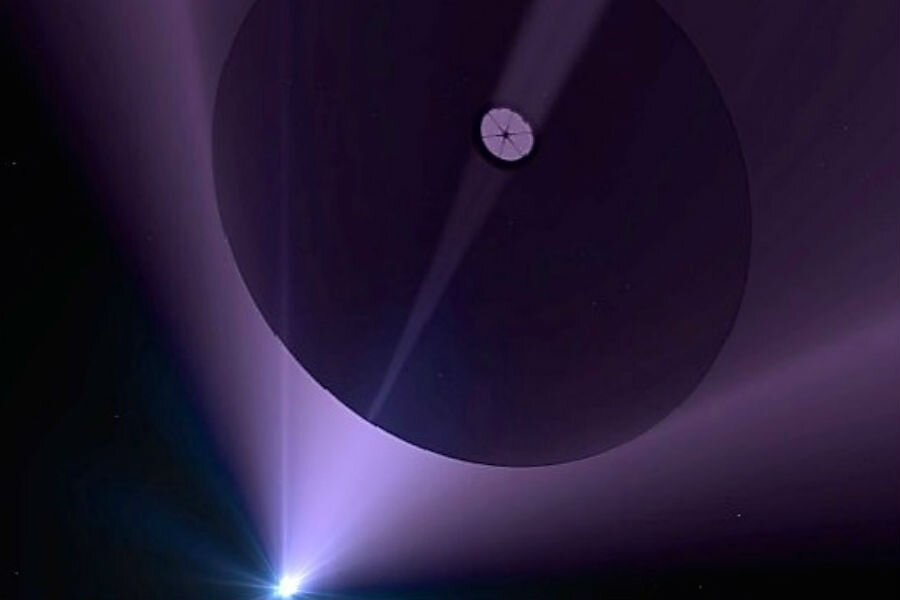3 days to Mars: How laser propulsion could revolutionize space travel
Loading...
While crewed missions to Mars may not occur until after 2030, scientists are already working on a system to send humans there in record time.
Using current propulsion techniques, a trip to Mars takes around five months each way, but a method of travel proposed by University of California, Santa Barbara physics professor Philip Lubin could get astronauts to the Red Planet in around a month’s time, and could send smaller, electronics-only crafts there within a matter of days.
His proposal uses a photonic propulsion system driven by large, Earth-based lasers. Spacecraft would "sail" using photons – massless quantum light particles – pushed against a large, reflective sail by carefully aimed lasers.
This is all still theoretical, but Professor Lubin thinks existing technology is up to the challenge.
“There are recent advances which take this from science fiction to science reality,” Lubin explained in a NASA 360 video about the project. “There is no known reason why we cannot do this.”
NASA is eager to hear more. Last May, their Innovative Advanced Concepts Program awarded Lubin one of 15 grants for "visionary" projects.
His program, Directed Energy Propulsion for Interstellar Exploration (DEEP-IN), would skip the customary chemical reactions needed for acceleration in most existing spacecraft. DEEP-IN ships would harness the electromagnetic photonic forces to propel craft at relativistic speeds – speeds that are a significant proportion of the speed of light (c). The DEEP-IN program website estimates that the system could propel “wafersats,” nanobots weighing about a gram, at more than 0.25 c, while larger craft weighing up to 100 tons could still travel at speeds around 1,000 kilometers per second (more than 2 million miles per hour), ideally without crushing any passengers.
“Electromagnetic acceleration is only limited by the speed of light, while chemical systems are limited to the energy of chemical processes,” Lubin wrote in a roadmap for the system last year.
The larger the vessel, the slower it goes – and a ship large enough to carry humans, food, and supplies would have to be very large, indeed.
Even so, says Lubin, the “completely scaleable” technology could improve spaceflight in craft of all sizes, including crewed interplanetary missions.
“Here's the dilemma: We know how to get to relativistic speeds in laboratories. We do it all the time! And then we go to the macroscopic level – things like aircraft, cars, spacecraft – we're pathetically slow,” Lubin explained in the NASA video. “So the question is: Can we bridge that gap?”
Although the wafersat probes proposed by Lubin are extremely small, their extraordinary (theoretical) range makes NASA sit up and take notice, as they could render extra-solar planets suddenly accessible.
“Within about 25 light years of the Earth, there's actually quite a few potential exoplanets and habitable things to visit,” said Lubin. “There are many targets to choose from.” He proposed Alpha Centauri, a group of stars about 4 light years away, as a possible destination for some of the photon-propelled craft.
“Exploring the nearest stars and exo-planets would be a profound voyage for humanity, one whose non-scientific implications would be enormous,” Lubin wrote last year. “It is time to begin this inevitable journey beyond our home.”






